Have you ever noticed how the sudden white beauty of winter can unleash a completely different kind of downpour on the expansive landscapes of Montana? Whether it’s the rapidly melting snow after intense rain or the breathtaking chaos of rain on snow, Montana’s winter flooding is as unpredictable as it is awe-inspiring.
In this article, we’re going to dissect the causes, potential hazards, and flood-prone zones, as well as traverse through significant historical floods that have shaped the state’s narrative. We’ll also be sharing some foolproof advice on how to prepare and what to do during a flood, which could make all the difference during emergencies.
Whether you’re planning a winter hike, organizing a community safety drill, or just cozying up at home while the snow falls, understanding the nuances of Montana’s winter flooding is a fascinating and practical pursuit, given that such events are becoming increasingly frequent due to climate change.
- Related article: Frosty Montana Weather
So don’t drop the snow shovel just yet; let’s continue on this journey together, exploring the winter flooding of Montana like never before.
7 Key Takeaways on Montana Winter Flooding
- Ice jams, snowmelt, and dam breaks are among the flood hazards in Montana.
- Montana has experienced more ice jams than any other state in the continental U.S.
- The southwestern pocket of Montana, including areas around the Missouri, Yellowstone, and Clark Fork rivers, are particularly susceptible to winter flooding.
- The 1964 flood is one of the most devastating floods in Northern Rocky Mountain history.
- On June 14, 2022, Yellowstone National Park shut down all of its entrances due to the 500-year flood.
- From staying informed about weather forecasts to winterizing your properties, there are several steps you can take to mitigate risks associated with winter flooding.
- If you’re planning a winter trip to or already live in Montana, understanding the local flood risks, particularly during a time of volatile shifts in weather conditions, can help ensure a safe and enjoyable experience amidst the state’s dynamic winter tapestry.
Winter Flooding in Montana
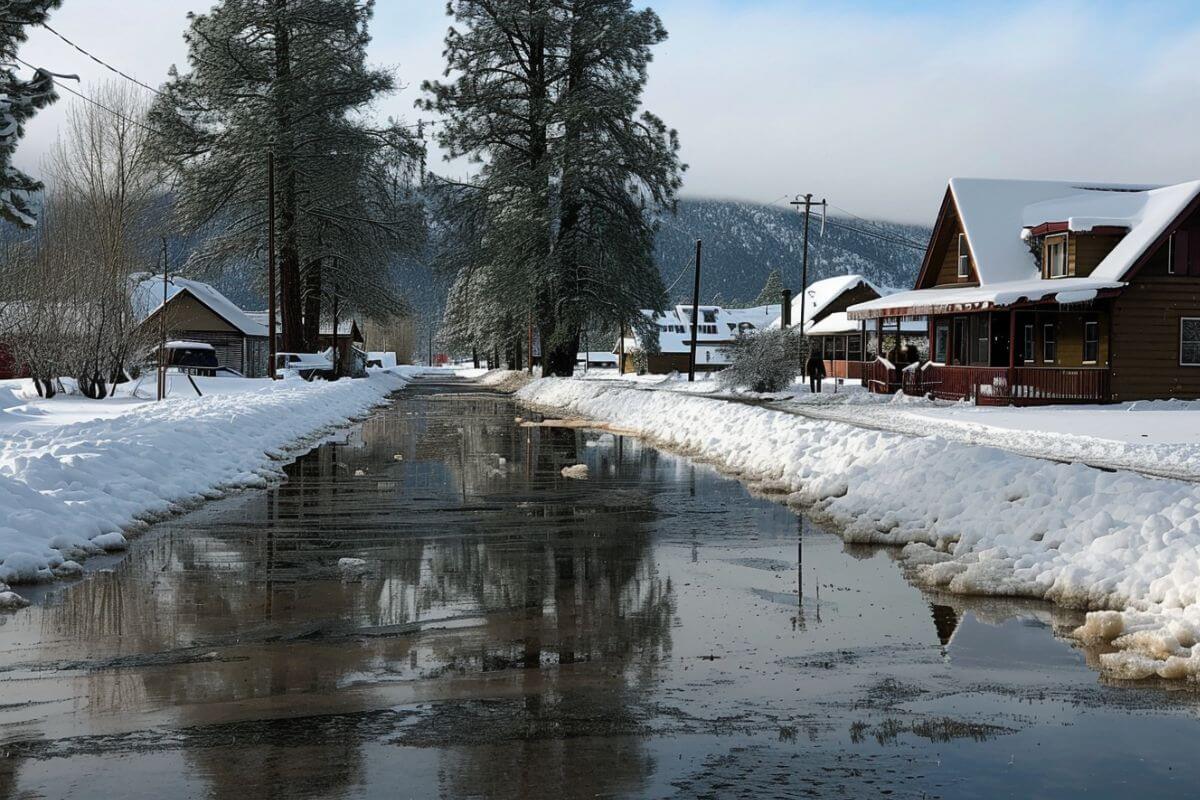
Montana, known for its picturesque mountains and wide-open spaces, also faces the challenge of winter flooding. In recent years, winter flooding has caused significant damage to homes, roads, and agricultural land in various parts of the state.
Understanding the history and patterns of winter flooding in Montana can be crucial for residents and travelers to safeguard against potential risks. So, if you’re planning a snowcation or live in the state, gathering local knowledge and keeping an eye on the weather can ensure your trip doesn’t take an unforeseen turn.
Flood Hazards in Montana
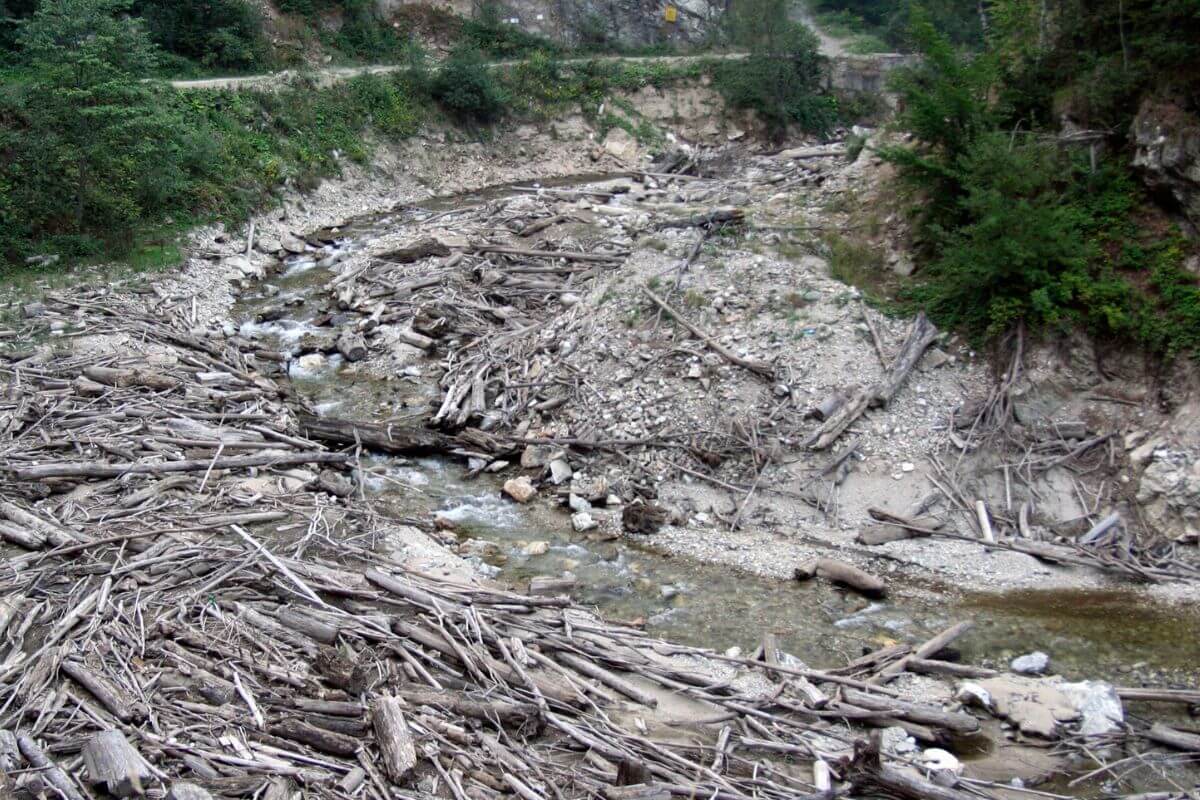
Montana faces a variety of flood hazards that pose significant threats to the state and its residents. Below are some of the major flood hazards in the Treasure State:
- Flash Flooding – Flash flooding occurs when a typically dry area quickly fills with high water or when a stream rises suddenly above flood levels, usually within 6 hours of an event like heavy rainfall, a dam break, or an ice jam.
- River Flooding – River flooding happens when the water levels in the river increase and overflow beyond their usual boundaries, flooding areas that are typically dry.
- Burn Scars/Debris Flows – Wildfires burn away vegetation, leaving bare ground that cannot absorb water, causing runoff during rain. This runoff, carrying soil and debris, can lead to flooding and, without vegetation to secure the soil, may result in mud and debris flows.
- Ice Jams – When ice or debris accumulates and blocks a river or stream, it can cause water to overflow into surrounding areas.
- Debris Jams – When debris obstructs a river or stream, it can cause the water to back up and overflow into the surrounding areas.
- Snowmelt – The melting of snow during the spring season can lead to flooding. This happens when temperatures rise rapidly, causing the snow to melt quickly.
- Dry Wash – Intense rainfall on dry land can cause water to rush towards low-lying areas like dried-up canyons or river beds, which can rapidly transform them into raging rivers.
- Dam Breaks/Levee Failure – A break or failure can happen suddenly and without warning. This usually occurs when water flows over the structure, the ground around it becomes too wet, or the structure itself fails.
With these various flood hazards, residents and local authorities need to be prepared and make plans in place to mitigate the impact of flooding. Understanding these terms is the first step you can take to keep yourself and your family safe in this ever-changing climate of Big Sky Country.
Causes of Winter Flooding in Montana
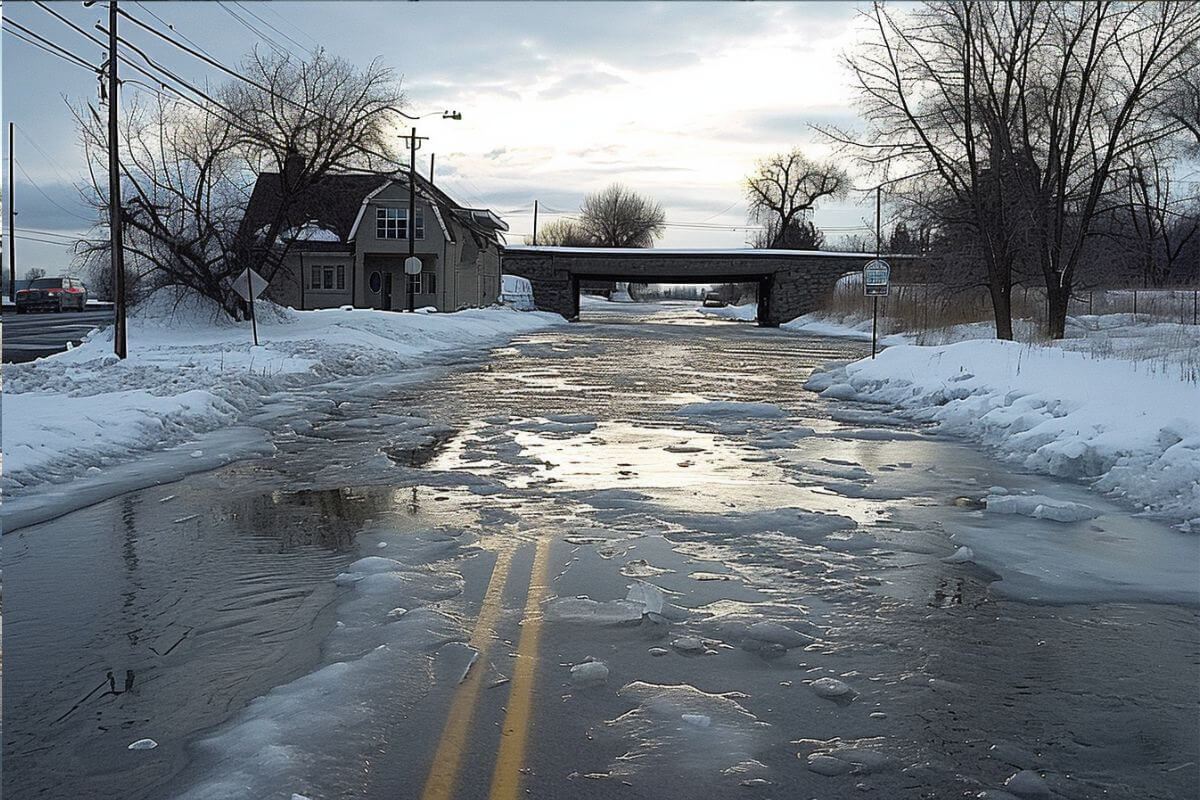
Despite its reputation for bone-chilling winters, Montana can also encounter flood events that accentuate its seasonal weather. They occur at any time of the year with causes that vary among seasons.
When it comes to Montana winter flooding, here are the most prevalent causes:
- Rain-On-Snow Events – Montana has experienced serious “Doubly Soaked” flooding, where existing snow is drenched by rain, intensifying both the volume and impact of the runoff. The state’s worst floods on record have occurred after a period of relatively cold weather.
- Ice Jam Flooding – During the darker, colder months typically from January until March, ice jams become a reality. These obstructions occur when sub-zero temperatures are followed by quick warm-ups, along with the spring melt.
- Extreme Precipitation – Just when we thought it was all about the snow and ice, Mother Nature throws in some intense rain to the mix. These sudden downpours can overwhelm natural and built watercourses, causing rapid flooding.
During prolonged periods of extreme weather, Montana faces the unique challenge of increasingly common ice jam events. Ice dams, the other name for ice jams, form in the river or stream flow as the melting ice can become lodged at bridges, bends, or narrower reaches. These clusters of ice obstructing don’t just subdue the flow, they can lead to flash floods.
So how severe are these ice jam events? Well, I’m not just noodling out obscure facts; statistics confirm Montana is at the top of the list for ice jam events in the continental U.S.
So, whether you’re a local or a visitor, especially during the winter, understanding these winter flood causes can help you plan, prepare, and even avoid potential risks. Keep an eye out for potential ice jam flooding, rain forecasts, and current snow conditions, and you can stay on the safe side of Montana’s dynamic winter tapestry.
Montana’s Flood-Prone Zones
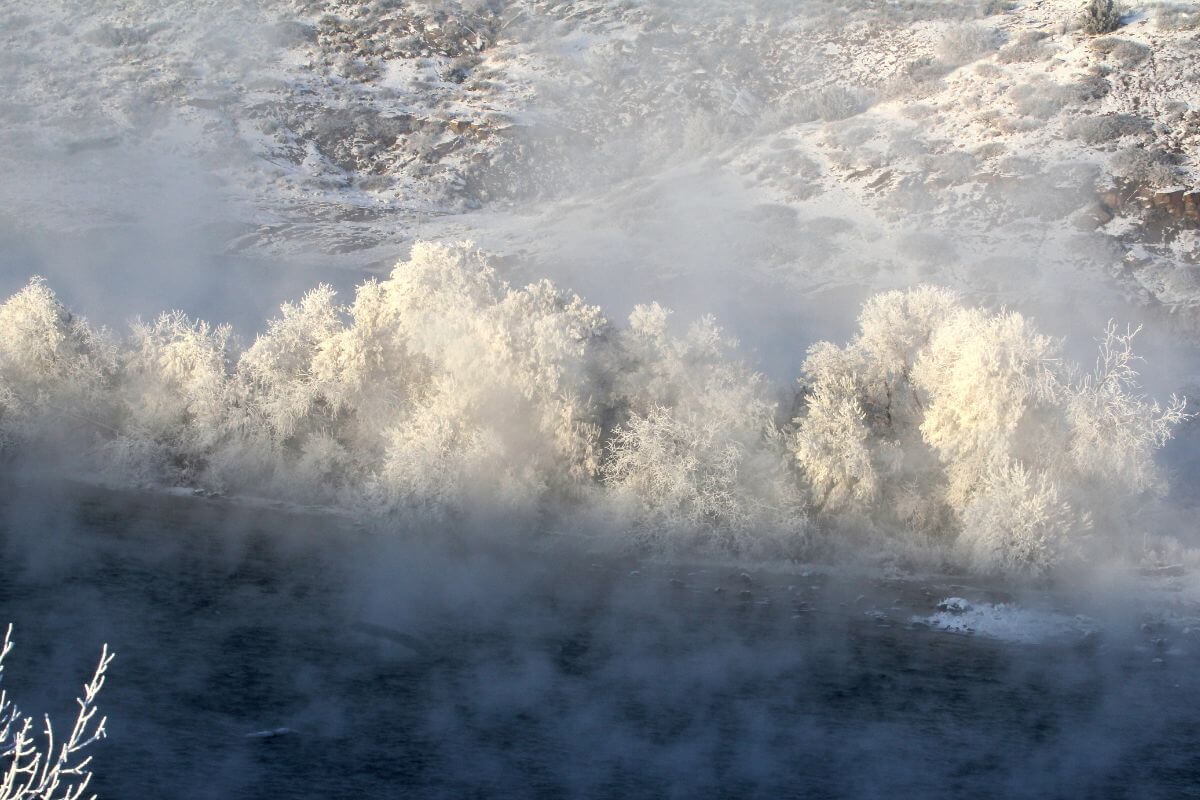
When Mother Nature lets loose with a watery symphony, you might want to check your atlas, because the southwestern pocket of Montana is where you’re most likely to need a life jacket. With southern Beverhead and Gallatin Counties, stretching up to Missoula but not leaving Cascade out of the party – the most severe floods can be expected in this part of the state.
Specifically, flood-prone zones in Montana are primarily found along rivers and low-lying regions, with notable risks associated with rivers such as the Missouri, Yellowstone, and Clark Fork. These waterways aren’t just picturesque postcard fodder; they’re also flood-risk hallmarks.
Bursting the “everything’s calm and cushy” bubble, Miles City teeters on the edge of Mother Nature’s fury. Nestled between the Tongue River and the Yellowstone River, Miles City has seen more flooded days than a poorly drained street.
Ice jams have prompted major flooding in Miles City in 1881, 1944, 1969, and most recently in 2011. The reason? Its location. It’s the real estate equivalent of that one spot that can’t catch a break on a faulty faucet, making ice jams the primary cause of floods in the area.
Additionally, these ice jams which act as the primary culprits in significant winter flooding, are more prevalent east of the Continental Divide during persistent cold weather fronts.
If your expedition has you venturing through these scenic areas, particularly during Montana’s cooler, harder icing days, be extra vigilant. Better to gasp at the breathtaking views these rivers usually offer than to find yourself in one—literally.
History of Significant Floods in Montana
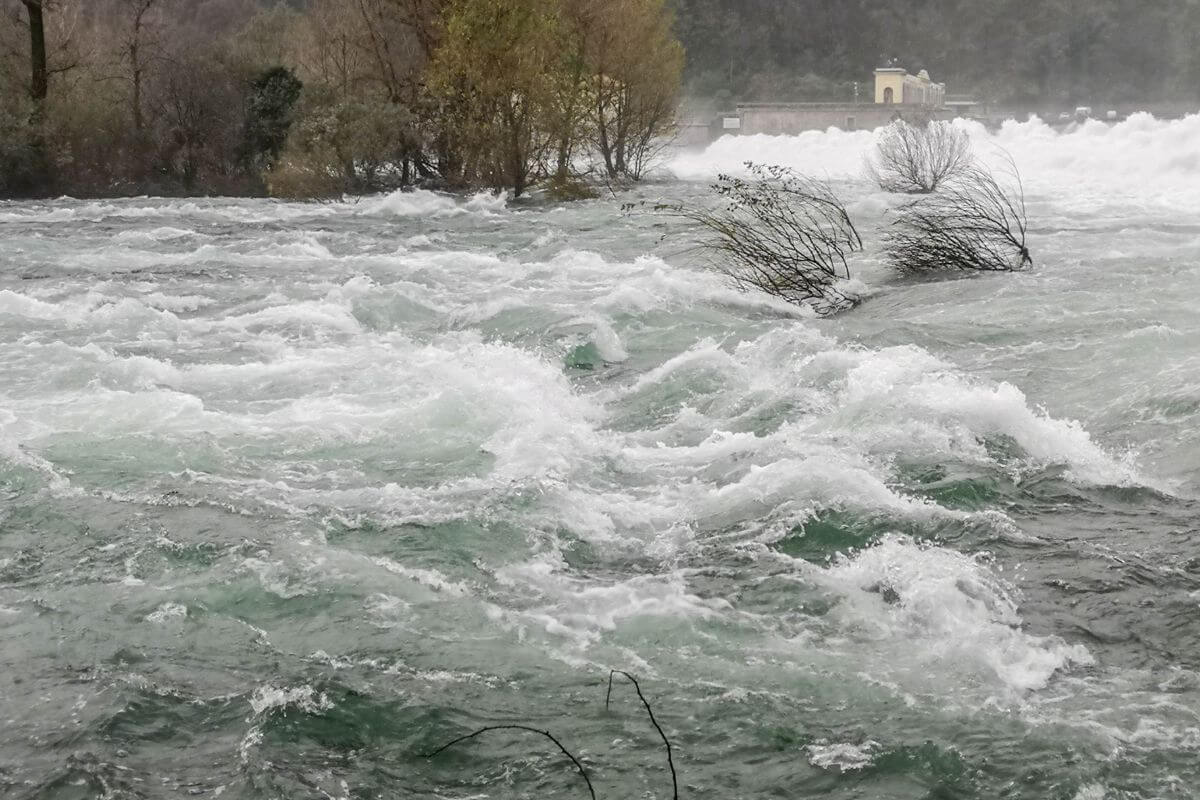
Montana has seen its fair share of wintertime floods, although it’s not the first thing that comes to mind when thinking about this rugged, expansive state. Throughout the decades, the state has weathered several significant floods, predominantly in the winter season.
Featuring a mix of heavy snowfall, rapid thaws, and unexpected rain, these floods are reflective of just how unpredictable Mother Nature can be, underlining the importance of being prepared rather than surprised. So, let’s dive into some of the notable floods etched into Montana’s history.
1. Montana Flood of 1908
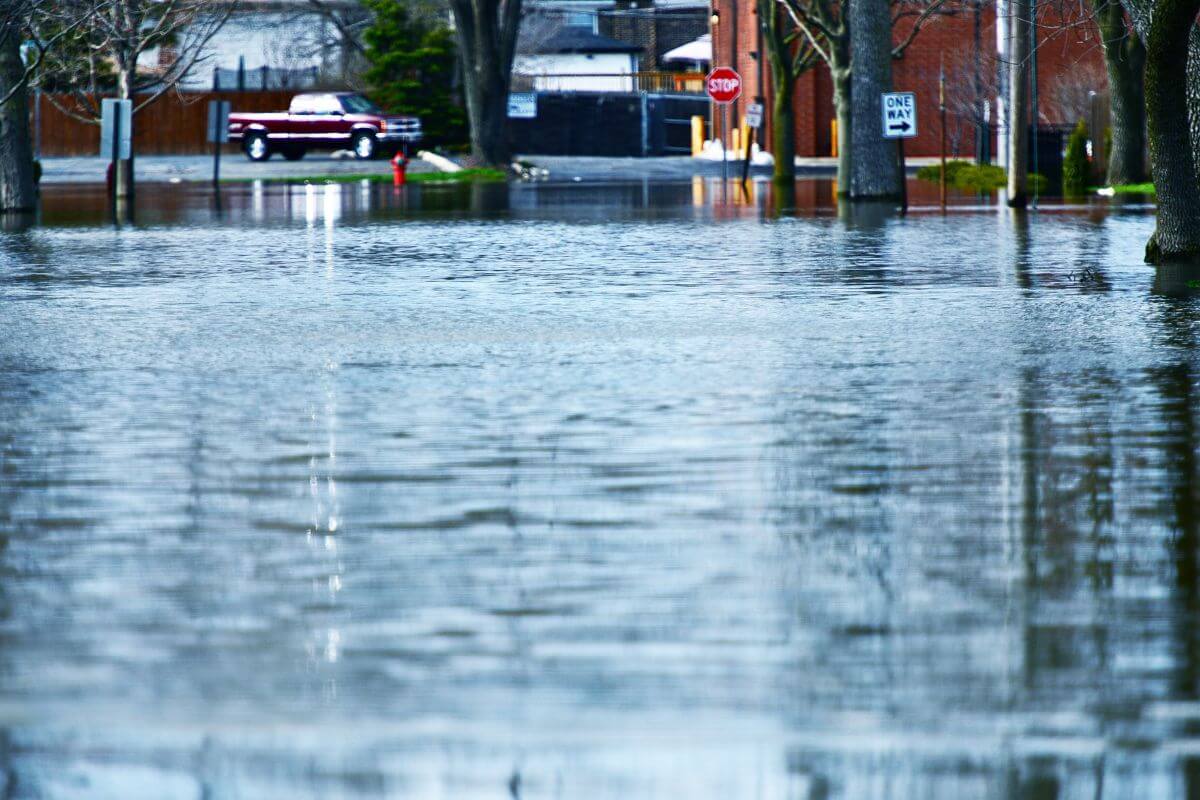
In 1908, Montana was tested like never before, when what some deemed the state’s most widespread and severe flood hit a large area, leaving a devastating trail. The timing couldn’t have been worse — the most destructive floods occurred in the southwestern part of the state, including Beaverhead and Gallatin counties. It wasn’t a local affair either; the trouble bubbled up north, spreading from Missoula to Cascade counties.
How did these cascading events unfold? Well, heavy rainfall blanketed the entire district, effectively priming the land for trouble. Then, as if a mixed-weather cocktail wasn’t enough, the rapidly melting snow in the high mountains added an extra punch. The result? Rapid flooding in almost all rivers and streams.
As if this situation wasn’t dramatic enough, the city of Butte saw its share of chaos. Days of heavy rain were followed by a snow dump — 9 inches of moist snow on June 4th. It’s like nature wanted to top off the tumult; the snow caused severe damage to wires and streets, flooding many of the older sections of Butte.
The 1908 Montana flood, considered the worst flood until 1964, remains a significant marker in the state’s history, if only for the widespread nature of the destruction and the undeniable proof of just how powerfully nature can assert herself.
2. Montana Flood of 1948
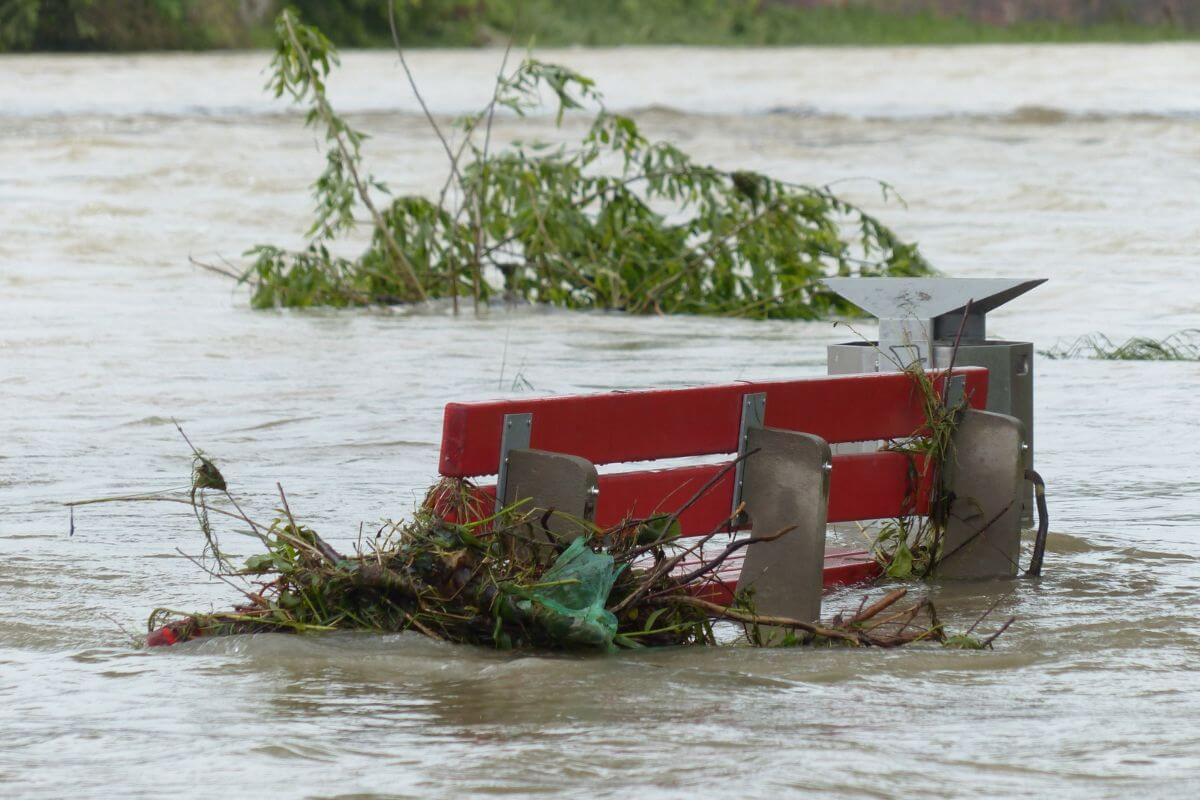
In 1948, Mother Nature cranked up the dial on temperature and precipitation, creating a climate cocktail that proved troublesome for Montana’s western valleys. Here are key notes about what happened during the 1948 flood in Montana:
- What Went Wrong – Spring’s cool weather delayed the melting of heavy snow in Montana’s mountain ranges. However, May brought rainfall and warmer temperatures, combined with the delayed snowmelt, resulting in rivers reaching levels unseen in over four decades.
- Hard-Hit Areas – The Bitterroot, Clark Fork, Flathead, and Kootenai Valleys bore the brunt. Bottomlands became waterlogged like over-soaked sponges, submerging approximately 1,500 acres of crops and disrupting life for about 40 families who had to evacuate.
- Livestock Tragedy – Some animals paid the ultimate price in this Act of Nature – an estimated loss of 100 livestock heads. True to Montana’s resilience, people had to leave behind a few animals due to the rapid waters.
- Economic Impact – Montana sure wasn’t bustling like it is today, but the flood still dealt a heavy blow. Over $1 million in losses was mostly due to destroyed cropland – about 28,000 acres of it.
Fortunately, there were no reports of loss of life in connection to the flood. This series of events in 1948 serves as a reminder of the potential impact of weather and natural disasters on communities in Montana.
3. Montana Flood of 1964
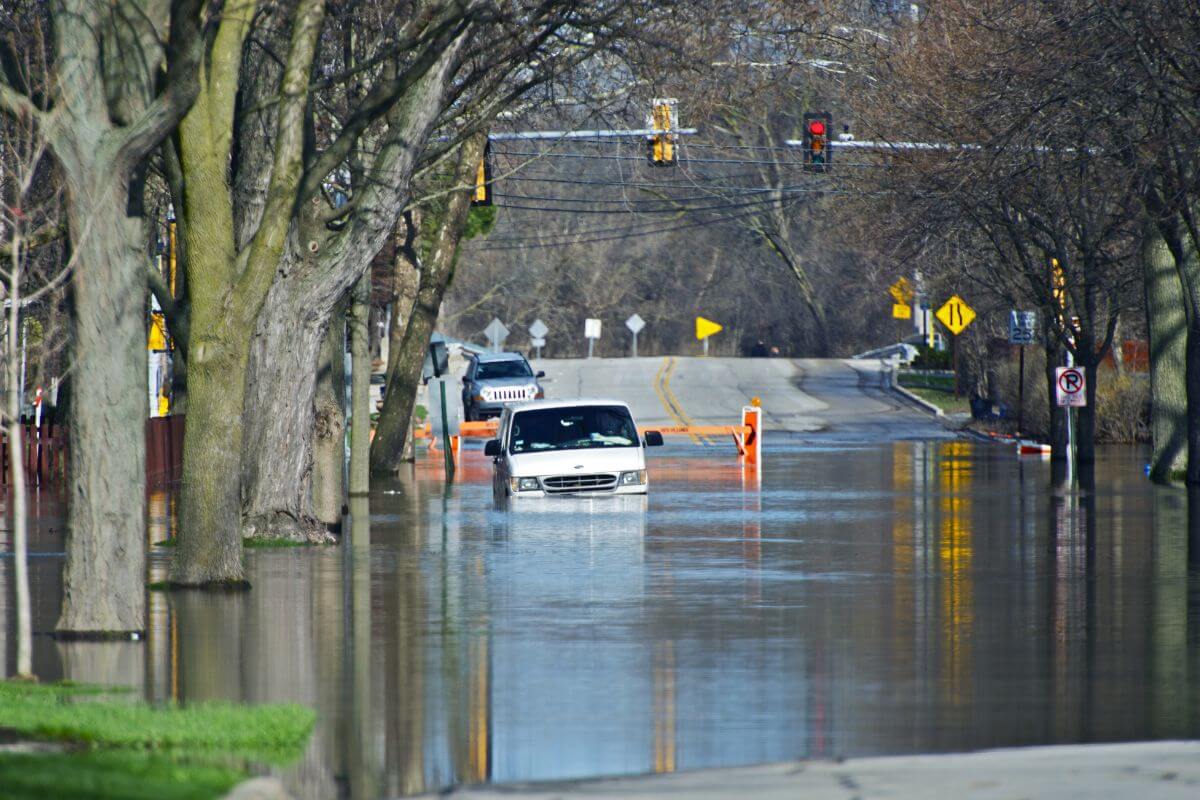
In the cool spring of 1964, Montana found itself in a unique predicament: the usual spring thaw of the mountain snowpack was postponed. Little did people know that this delay, coupled with above-average snow levels, would lay the groundwork for one of the most catastrophic events in local history, the 1964 flood.
The stage was set for disaster when extremely heavy rains collided with the hesitant snowmelt along the Continental Divide, stretching from north of Helena to the Canadian border. The 1964 flood’s death knell, however, came from the failure of two key dams, Swift Dam and Lower Two Medicine Dam, leading to the tragic loss of 32 lives.
In addition, numerous highway and railroad bridges were washed away, farm and ranch lands in the river bottoms were effectively subsumed, and the property price tag? A staggering $62 million of property losses.
Highlighting the complexities that led to the 1964 flood uncovers a rich history, ripe with both lessons and the simple reminder that no matter how much things change, Montana’s mercurial relationship with its elements endures.
4. Montana Flood of 1978
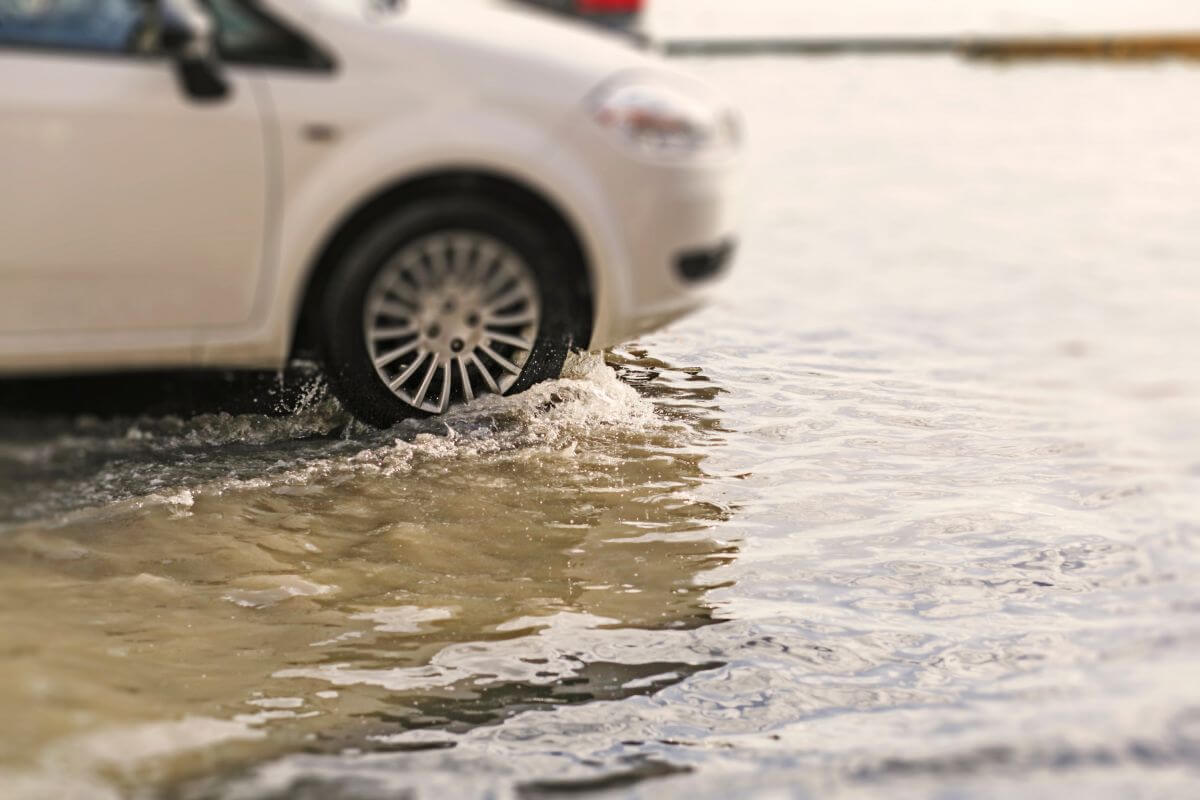
Being a history buff isn’t just about ancient tales; it’s about diving into Montana’s past to uncover the 1978 flood that’s etched in the state’s memory. Mother Nature unleashed her fury over The Treasure State with two storms.
An April storm soaked Montana’s soil, creating the perfect pre-flood setup. Then came round two. May brought a hammer – a snowstorm that dumped 15 to 32 inches of heavy, wet snow across central and eastern Wyoming. That white blanket was no comfort; it was a ticking time bomb.
These storms affected the flooding in Yellowstone River, along with the Bighorn, Tongue, and Powder Rivers, which became Montana’s watery battleground. The rainfall in lower elevations was just the punctuation mark to the snowmelt’s runaway narrative from the mountains.
Imagine the snow as an introverted guest at a party — it lingered around, delaying its exit until warm temperatures urged it to flow down the mountain slopes. This delayed reaction resulted in an escalated flood threat.
Montana’s 1978 flood might be nestled in the past, but its mark is indelible. Taking cues from history isn’t just about reminiscence; it’s about arming yourself with the knowledge to navigate Montana’s ever-changing landscape, winter flooding, and all.
5. Montana Flood of 2011
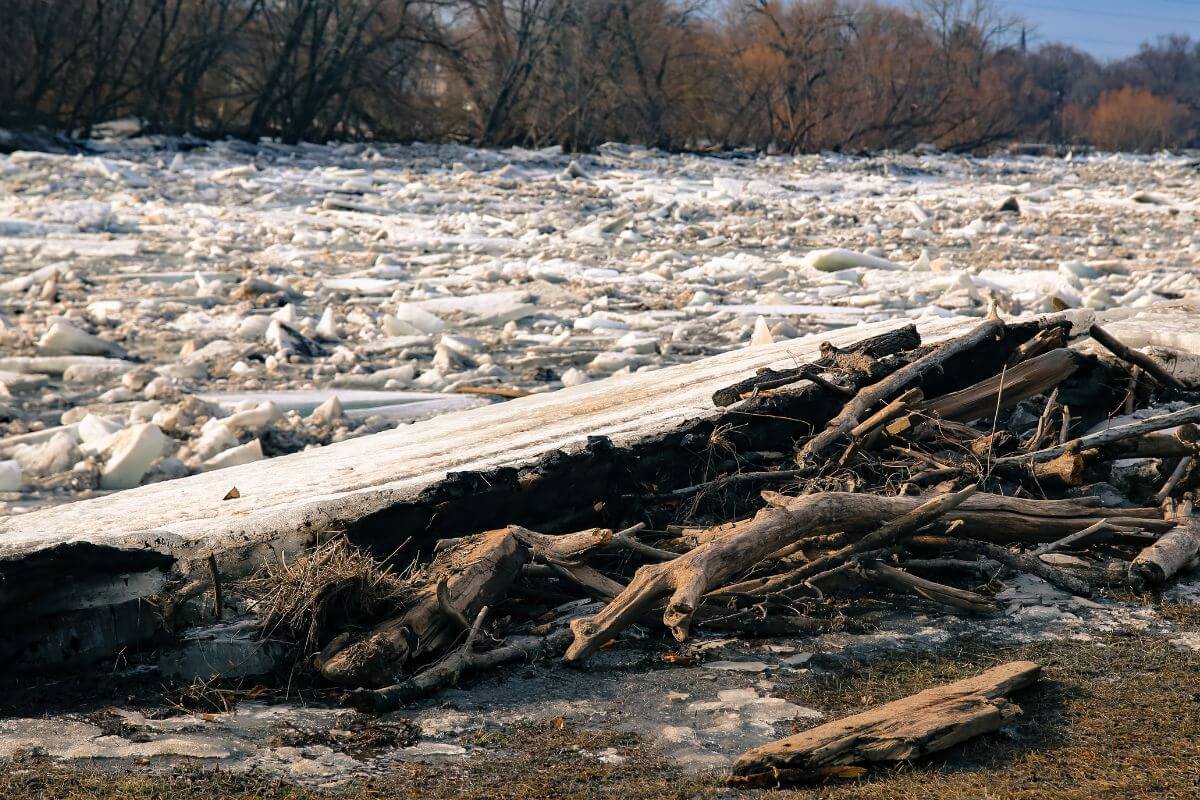
Montana’s 2011 flood was a phenomenon that took the state by surprise due to its breadth—it was like nature itself had decided to water all corners of the land.
This wasn’t your typical overflow; it was established on the foundation of a particularly wet summer and autumn in 2010, which primed the soil’s excessive moisture. The unique interplay of temperature and abundant precipitation brought a series of waterworks that stretched Montana’s resilience to the max.
As cold temperatures hit, standing water transformed into a frozen landscape reminiscent of a freezer aisle. River ice and ice jamming posed significant challenges, especially in the west and central regions. As if that wasn’t enough, Montana’s freezing weather also unleashed significant snowstorms by March.
This snowfall was not your average white dusting; it was a full-blown Winter Wonderland that at its peak covered Montana’s plains in snow, with a snow water equivalent of 4 to over 16 inches in different locations. This not only complicated the flood situation but also became the equivalent of someone piling on more water to an already overflowing glass.
Flooding can happen in any kind of winter environment, and the 2011 events in Montana are a testament to that. It’s a reminder to always be prepared, no matter the weather.
6. Montana Flood of 2022

Montana’s 2022 flood made history, earning the ominous title of a “500-year flood.” So, what’s a 500-year flood? It’s when an amount of rainfall or snowmelt is so impressive that statisticians theorize, on average, it occurs only once every 500 years. Well, it happened sooner than expected.
On June 13, 2022, increased snow and rain wreaked havoc, leading to the gravest flooding Montana has seen in a long, long time. This wasn’t just about a powerful video from a riverbank man — the Yellowstone River broke its all-time volume record, reaching over 50,000 cubic feet per second.
The Yellowstone River wasn’t alone in besetting Montana. Rivers like Gallatin, Stillwater, and Rock Creek – especially in the Beartooth Range – bore the brunt, too.
Yellowstone National Park, a favorite winter destination for adventurers and nature lovers, took the extraordinary step of shutting down all its entrances. Around 10,000 visitors were hastily evacuated, as the park turned into a watery, chaotic maze.
According to the National Weather Service, a combination of heavy rain over melting mountain snow launched these rivers into uncharted heights. The result? Record levels that triggered rock and mudslides, making the historic flood even more cataclysmic.
This historic flooding has caused widespread devastation and had a significant impact on Montana’s natural and human environments.
Montana Flood Safety Tips
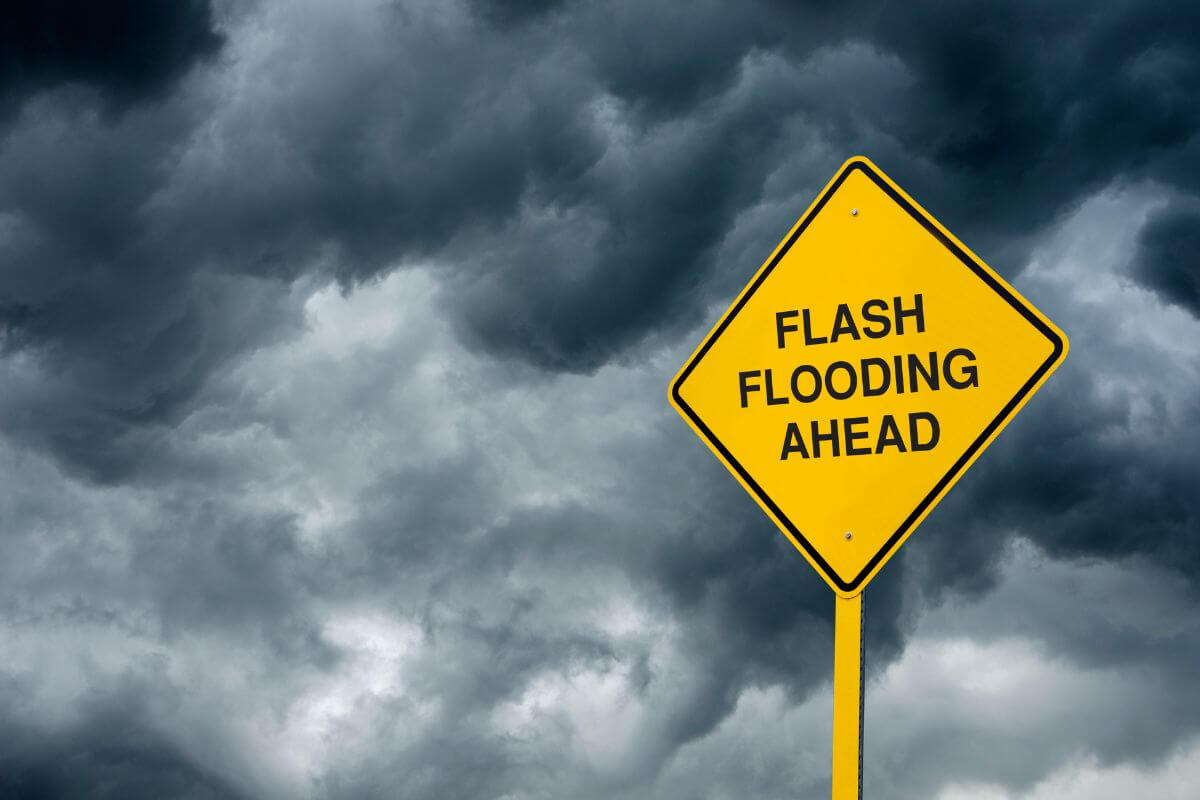
Winter in the Treasure State can be as picturesque as a postcard, but with droves of snow piling up, often, it can lead to potential flood risks. Whether you’re a seasoned local or a winter wanderer embracing the beauty of the state, it’s crucial to be smart about flood safety.
There’s no reason your Montana vacation or lifestyle should be dampened by these natural occurrences— armed with the right knowledge, you can stay high and dry. By arming yourself with knowledge and being proactive, you’re not just protecting yourself, but also keeping the adventure and awe of winter in Big Sky Country alive and thriving.
Before the Flood

Amid the rustic Montana winter landscape, the threat of flooding is troublesome but manageable if you’re proactive. Sometimes, like a slow-motion tragedy, forecasters can predict the possibility of flooding days or even weeks in advance. On other occasions, a flash flood can hit within minutes, sometimes without a raindrop announcing its arrival.
The question then becomes: what can you do before the waters start to rise? Here are some handy tips to keep in mind before a flood in Montana happens:
- Creating a Communications Plan – Designate a point person for staying connected when disaster looms – ensure updated phone numbers, emails, and social media contacts. Establish an agreed-upon meet-up spot in case things go south.
- Make a Family Emergency Plan – While we hope it’s unnecessary, creating a family emergency plan can be a lifesaver. Discussing ‘what ifs’ and strategizing a flood evacuation plan will bring peace of mind to everyone involved.
- Assemble an Emergency Kit – An emergency kit should include three days’ worth of food, an adequate supply of drinking water as flooding can compromise local water systems, medicines, a flashlight, and, of course, a sturdy pair of rubber boots.
- Know Your Area’s Risk – Do you know if your home or workplace sprawls across a floodplain? Acquaint yourself with your daily routes — understanding where water may pool can be a literal lifesaver.
- Prepare Your Home – Sandbags, sump pumps, and secured breaker panels are like superhero gear when floods knock on your door.
- Turn Off Gas and Electricity – If you suspect flooding is imminent, it’s best to shut off your gas and electricity supply to avoid disaster. Act proactively, it’s better to spend a few extra moments performing these tasks than dealing with the consequences.
- Prepare your Family/Pets – Your fur babies are part of the family too. Don’t leave their essentials to chance. It’s best to pack in advance as you may be evacuated.
- Charge Your Essential Electronics – In a digitally dependent world, charged-up phones power through the worst of disasters. Also, include portable radios and backup batteries. They come in handy for checking flood warnings.
- Purchase Flood Insurance in Advance – It’s not the most exciting purchase, but it’s a necessary one. Buy flood insurance, and buy it early—it typically needs 30 days to kick in. The peace of mind that it brings is worth every penny.
- Leave – If there’s a high risk of flooding in your home, don’t wait for official orders to leave. It’s best to evacuate yourself. Make sure to have backup plans ready in case of an emergency.
- One last winter-specific tip – Clear snow from homes and structures to save yourself from potential issues. When temperatures start to climb, that snowmelt needs somewhere to go and you don’t want it seeping into your basement.
It could be a slow march to the inevitable or a thunderous surprise; the basic advice remains the same: be ready. Preparing before the flood not only increases your chances of staying safe but also minimizes the havoc afterward. As the adage goes, “Failing to prepare is preparing to fail.”
During the Flood
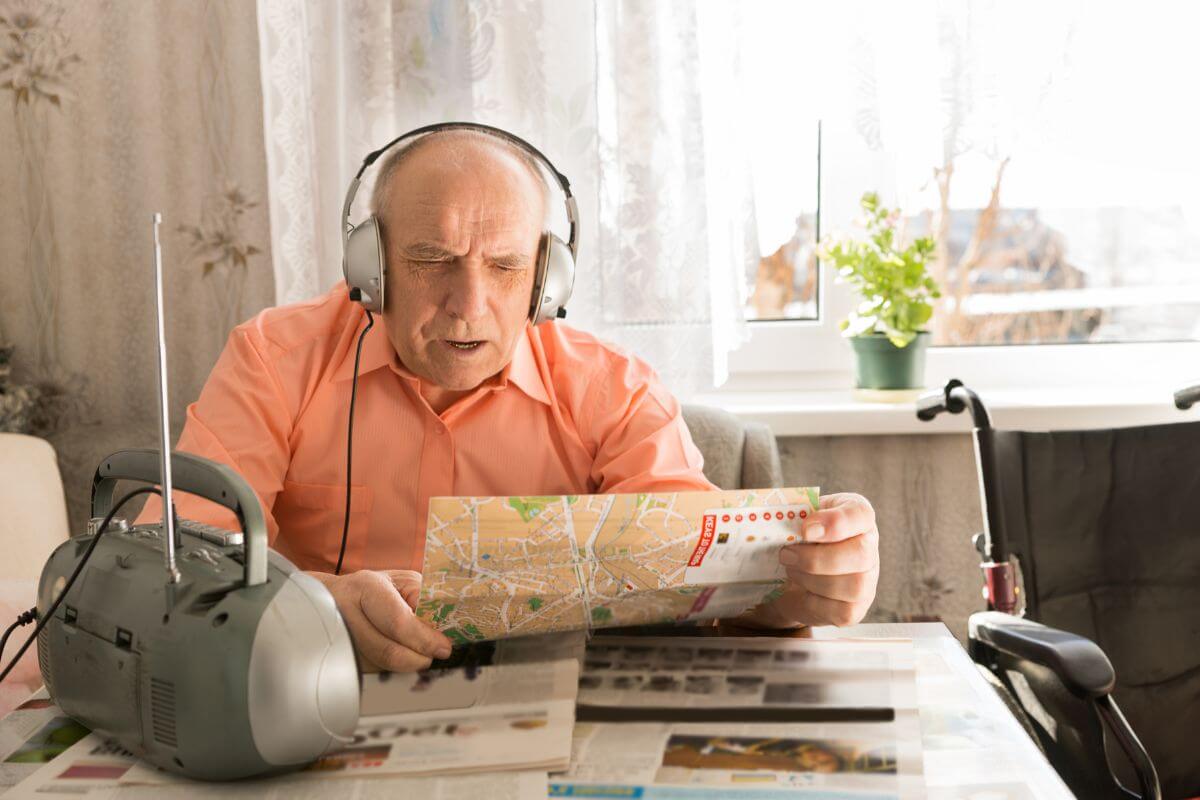
Montana’s winter floods are no joke; water levels can unexpectedly surge, and the flow rate can change in the blink of an eye. Here are crucial steps to take if you find yourself facing a flood in the Treasure State:
- Stay Informed – Listen to the radio, television, or NOAA Weather Radio for updates. Check the Internet and social media for real-time information. Make sure to verify the source of the information to avoid misinformation.
- Get to Higher Ground – If you’re in a flood-prone area or camping in a low-lying region, move to higher ground right away. Do not wait for the water to reach a dangerous level.
- Obey Evacuation Orders – If authorities advise you to evacuate, don’t second-guess it; do it immediately. Lock your home if you’re leaving and if time allows, disconnect utilities to prevent electrical mishaps.
- Practice Electrical Safety – Avoid entering a room where water covers electrical outlets or cords are submerged. If you notice any electrical issues like sparks or unusual noises, vacate the premises immediately.
- Avoid Flood Waters – Walking through floodwaters is dangerous; just 6 inches of moving water can knock you off your feet. If trapped, move to the highest point for safety, and never drive into flooded roadways as hidden hazards can be extremely dangerous.
- Avoid Frozen Rivers/Ice Jams – Avoid venturing onto a frozen river or ice jam, even if the landscape appears picturesque. Thermal currents in rivers are unpredictable, and ice stability is ever-changing, posing risks of chilling injuries or drowning.
Life in Montana’s beautiful wilderness is nothing short of an enchanting adventure, but let’s lean on these safety tips to ensure a flood doesn’t turn this winter wonderland into a dangerous outing.
After the Flood

As the floodwaters retreat, it’s essential to recognize that the aftermath holds its own set of challenges. Every nook and cranny might be teeming with hidden hazards. From contaminated waters to gas leaks and live power lines, the hazards might not be conspicuous at first sight.
Here are steps you can take after a flood in Montana:
- Stay Informed – The first step in your post-flood checklist is to be vigilant and keep yourself informed. Follow local news for road updates and safety advisories. Ensure that your water is safe for consumption and hygienic activities.
- Avoid Flood Waters – Flooded areas can hide toxins, sharp debris, and even collapsed road sections.
- Avoid Disaster Areas – Steer clear of disaster zones as your presence can impede emergency operations.
- Heed Closure Signs – Those road closure signs aren’t there for kicks. Respect them and stay safe.
- Wait for the All Clear – Don’t be in a rush to dive back into flood-damaged homes and buildings. Wait for the official all-clear; when you do enter, watch out for weakened structures and ensure that the electrical system has been safely turned off.
- Check on Loved Ones – Finally, do a quick check on your loved ones. A simple message or call can assure them of your safety and prevent unnecessary worry.
Remember, patience is your best friend in the aftermath of a flood. By staying informed, avoiding danger zones, and waiting for official notices, you’re not only keeping yourself safe but also preventing any further strain on the resources of the already overworked first responders and emergency personnel.
Montana Winter Flooding Final Thoughts
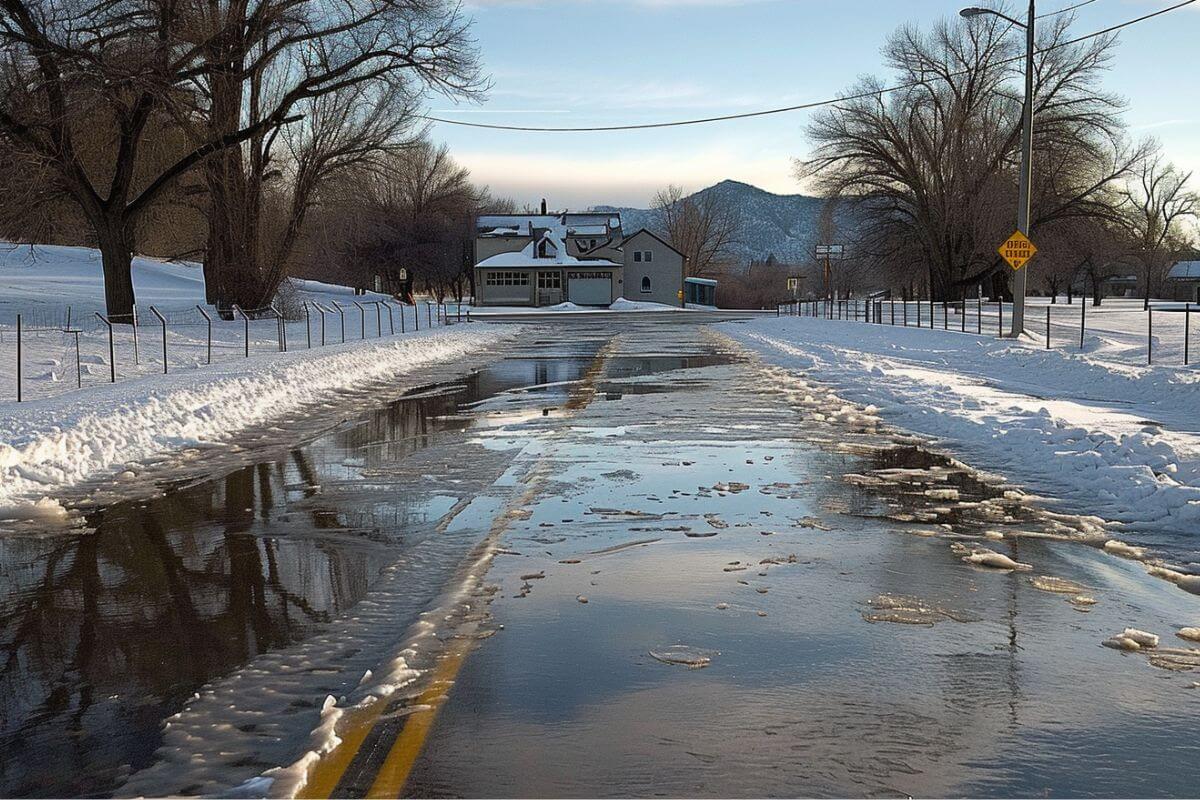
In the diverse, ever-changing tapestry that is Montana, winter flooding undoubtedly plays a notable but less discussed role. As the state confronts erratic temperature shifts and the tangible impact of climate change, the frequency of these floods is undeniably on the rise.
Whether you’re a proud resident or an eager visitor, understanding and planning for these unique winter flood challenges is imperative in ensuring a safe and enjoyable experience amid Montana’s dynamic winter landscapes. Safety precautions, locally tuned guidance, and careful, informed planning can transform potential risks into exciting winter adventures.
As we look back at historical floods like those in 1964 or 2022 which significantly shaped Montana’s modern-day flood management, we can appreciate the interplay between human resilience and nature’s unpredictability.
So, as you plan your next Montana escapade, factor in this winter flood knowledge to your preparation checklist. By doing so, you’re not just protecting your property – you’re safeguarding your ability to fully revel in the Big Sky Country’s unparalleled beauty, even in its harshest, winter months.
Montana Floods FAQs
1. What Was the Worst Flood in Montana History?
One of the most devastating floods in Montana’s history occurred in 1964 on the Blackfeet Reservation, resulting in the tragic loss of 32 lives and property losses exceeding $62 million, marking it as a significant and impactful event in the state’s history.
2. What Caused the Flooding in Yellowstone?
Heavy rain and fast snow melting caused the 2022 flooding in Yellowstone National Park.
3. What Is the Sunken Town in Montana?
Canton, a small town in Broadwater County, Montana, is now submerged beneath Canyon Ferry Lake near Helena, Montana, due to the construction of a second, larger dam to replace the nearby Canyon Ferry Dam, initiated in 1949.
4. Where Was the Worst Flood in U.S. History?
The Great Mississippi Flood of 1927 is considered the worst flood in U.S. history. It affected multiple states along the Mississippi River, causing widespread devastation and displacing hundreds of thousands of people.
5. What Was the Worst Natural Disaster in Montana?
The 1964 flood on the Blackfeet Reservation is considered the worst natural disaster in Montana’s history, resulting in devastating flooding that caused substantial damage to homes, infrastructure, and agricultural land, profoundly impacting the local community.
Embark on a captivating journey through Montana with these exciting reads below:
- Is Montana the Coldest State?
- Navigating Winter Roads in Montana
- Guide to Winter Clothing in Montana
- https://www.weather.gov/safety/flood-states-mt
- https://www.weather.gov/safety/flood-before
- https://www.weather.gov/safety/flood-during
- https://www.weather.gov/safety/flood-after
- https://murrow.wsu.edu/the-blackfeet-flood/
- https://leg.mt.gov/content/Committees/Interim/2019-2020/Water-Policy/Meetings/Sept-2019/MontanaClimateAssessment-Water.pdf
- https://www.flickr.com/photos/yellowstonenps/52342159737/

